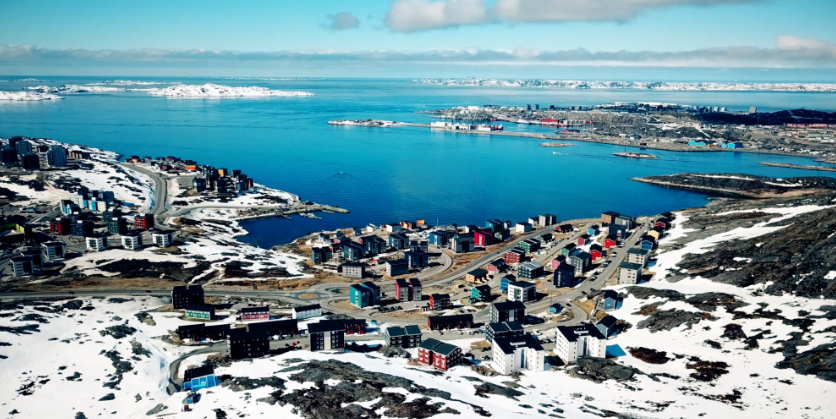When you think of the world’s largest countries, places like Russia, Canada, and the United States probably come to mind. Europe, on the other hand, is known for its smaller, densely populated nations. However, one European country is secretly a territorial giant—Denmark.

Yes, Denmark! At first glance, Denmark seems like a small nation. Its mainland, located on the Jutland Peninsula, covers just 43,000 square kilometers—about half the size of Chongqing, China. In fact, Denmark ranks 134th in the world by land area. But here’s the twist: Denmark has two overseas territories, and one of them is massive.
The Hidden Power of Denmark’s Overseas Territories
Denmark’s overseas territories include the Faroe Islands and Greenland. While the Faroe Islands are relatively small (1,399 square kilometers), Greenland is a behemoth.
How big is Greenland? Imagine China’s Xinjiang province, which is famously vast at 1.66 million square kilometers. Now add 500,000 more square kilometers—voilà, you have Greenland! At 2.16 million square kilometers, Greenland dwarfs most countries. It’s large enough to fit 60 Taiwans inside it! If Denmark counted Greenland as part of its official land area, its total size would be 2.21 million square kilometers, making it the 12th largest country in the world—bigger than Saudi Arabia!
Why Doesn’t Denmark Count Greenland?
Despite its size, Greenland isn’t included in Denmark’s official land area. Why? The answer lies in history, climate, and politics.
The Harsh Reality of Greenland’s Climate
Greenland’s name, ironically, means “Green Land” in Danish, but don’t let that fool you. About 85% of its land is covered in ice, with an average ice sheet thickness of 2,300 meters. If Greenland’s ice melted, global sea levels would rise by a staggering 7.5 meters!
Most of Greenland is an icy, windswept wilderness. The central highlands can reach temperatures as low as -70°C, making it the second coldest place on Earth after Antarctica. The island’s east and north coasts are almost uninhabitable, while the west coast has slightly milder conditions. As a result, Greenland has only about 76,000 residents, with its capital, Nuuk, housing just 16,000 people.
Greenland’s geography is breathtaking, featuring deep fjords and the world’s longest fjord, Scoresby Sund, which extends 340 kilometers inland and plunges to depths of 1,450 meters. The island also experiences the extremes of polar life: months of darkness in winter, illuminated by the stunning northern lights, and endless daylight in summer, making it a true “land of the midnight sun.”
A Complicated History: Denmark, Norway, and Greenland
Greenland has a long and complex history. Indigenous Inuit peoples arrived over a thousand years ago, followed by Norse settlers in the 10th century. By 1261, Greenland had become a Norwegian territory. Later, in 1397, Denmark, Sweden, and Norway formed the Kalmar Union, with Denmark as the leading power. Even after Norway became independent in 1905, Greenland remained under Danish rule.
Fast forward to today: Greenland is still officially part of the Kingdom of Denmark, and all Greenlanders are Danish citizens. However, the island enjoys significant autonomy. Since 2009, Greenland has been largely self-governing, managing everything except foreign affairs, defense, and financial policy, which remain under Danish control.
The Push for Independence
Many Greenlanders favor full independence. The island is rich in natural resources, including vast deposits of oil, gas, and minerals. Some estimates suggest Greenland’s offshore oil reserves could hold up to 31 billion barrels! With such resources, Greenland could potentially sustain itself as an independent nation.
In a 2008 referendum, 75% of Greenlanders voted in favor of greater autonomy, and discussions about full independence continue. However, Greenland still relies on Denmark for financial aid—Denmark provides about $600 million annually, a significant part of Greenland’s economy.
Conclusion: A Kingdom with Two Faces
Denmark may appear small on a world map, but its territorial reach tells a different story. With Greenland included, Denmark jumps from a minor European nation to a global territorial power.
So next time you look at a world map, remember: Denmark isn’t just about Copenhagen’s fairy-tale castles and Viking history—it’s also a kingdom that stretches deep into the Arctic, holding one of the world’s largest landmasses in its grip.

No comments yet.